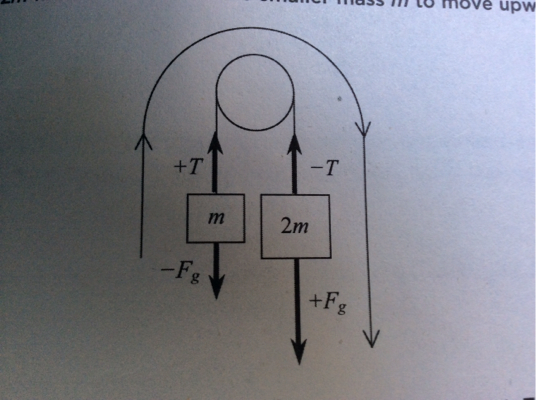First of all, you say
how then can tensions forces in this photo be equal if their sources are of different weight
This shows a fundamental misunderstanding. The two weights are not the "sources" of the tension. The tension results from the interaction between the whole rope and both masses.
Somewhat expanding on the good answer from @Eeko, you might try the somewhat unusual approach of drawing the free body diagram for a small piece of the rope. Focus on a piece of the rope that isn't in contact with the pulley. What is this piece of rope touching? The only things it touches are the adjacent pieces of rope that it is attached to, and they can only exert tension forces on it (one tension up, the other down). The only other force that could act on this piece of rope is gravity.
Now, taking up as positive Newton's 2nd law reads:
$ma = T_1 - T_2 - mg$,
where $T_1$ and $T_2$ are the two tensions and $m$ here refers to the mass of this piece of rope. We usually approximate ropes as massless. So this gives us
$0 = T_1 - T_2$.
So the tensions exerted above and below this piece of rope have to be equal. Since this has to be true for any part of the rope the tension must be the same throughout the rope.
But look at why we got this result. We had to assume that the rope was massless. (tension the same everywhere in the rope is often called the "massless rope approximation) If you assume (more realistically...) that it isn't massless then $T_1 \neq T_2$. If the rope is heavy compared to the hanging masses then you can't get away with this approximation and the tension isn't the same everywhere in the rope. This makes the problem harder. Usually the massless rope approximation is a pretty good approximation and since it makes life so much easier we use it.

